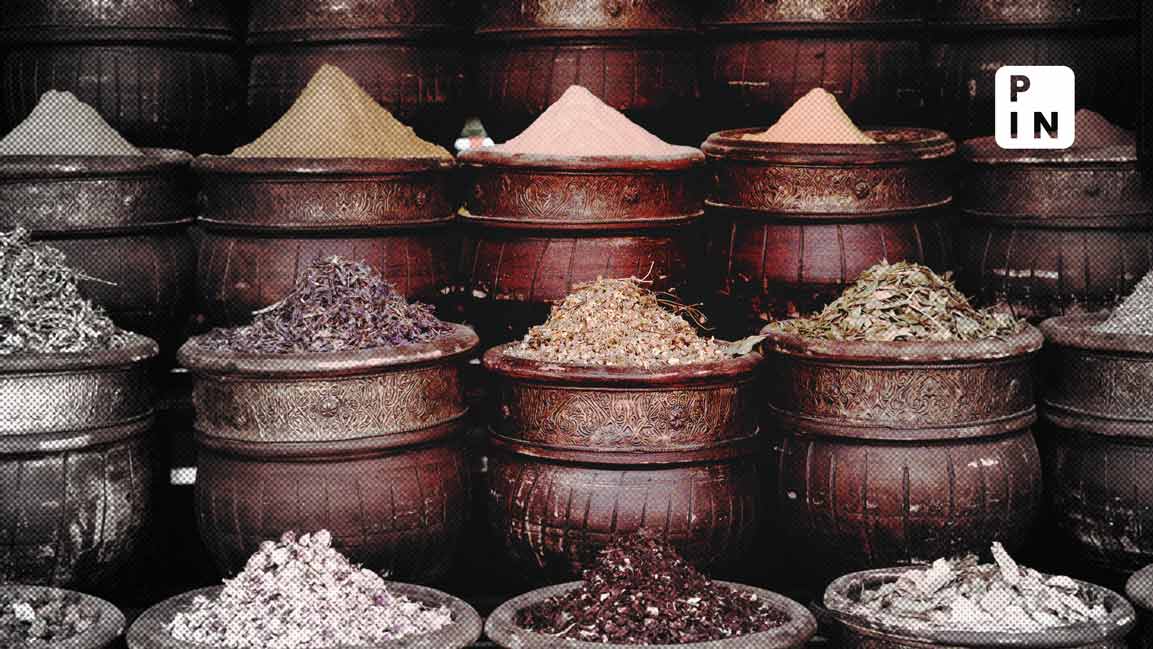- | 6:00 pm
India’s spice market sizzles, but not everything is hot and spicy
As India spices up global cuisines, pest woes and saffron’s decline point to some bitter-sweet realities

For centuries, India has been at the heart of the global spice trade, and is today the largest producer, consumer, and exporter of spices.
The country recently played host to three ‘global’ spice summits in a span of just six months: a ‘World Spice Conference’ in Mumbai last September, followed by a ‘Global Spice Summit’ in Jaipur this January, and an ‘International Spice Conference’ in Gurugram this week.
Trade figures speak volumes of India’s stature in the global spice market. Last fiscal (FY23), India exported 1.4 million tons of spices worth close to $4 billion, with chili making up 33% of the total value, government data showed.
At the Mumbai spice conference in September that almost coincided with the G20 summit, trade minister Piyush Goyal said: “This is an opportunity to celebrate the flavors of India and the versatility the country offers. Let us go to capture world markets. Just like life is incomplete without celebrations, food would be incomplete without spices. We should make this an essential ingredient across the world.”
Indian diaspora as ambassadors
This week, at the spice conference in Gurugram, Boston Consulting Group senior partner Abheek Singhi said “India’s growing diaspora can be ambassadors of Indian spices.”
To be sure, the government is following a strategy to engage overseas Indians to promote all things Indian, including tourism. During a rare pre-election trip to Jammu and Kashmir on Thursday, 7 March, Prime Minister Narendra Modi exhorted Indians abroad to act as cultural ambassadors and nudge their non-Indian friends to visit India.
Syed Fasihuddin, president of operations and projects at Desai Foods that owns brands such as Mother’s Recipe and Dabee, said there is growing interest from countries across the Asia-Pacific, the Middle East, Africa, and Latin America for authentic Indian spices.
“Countries like Brazil, Mexico, and Argentina are increasingly interested in Indian culinary traditions,” he said, highlighting a diverse global palate for Indian spices.
To support exporters, the Spices Board has set up quality evaluation labs across India to ensure compliance with global standards.
The growing popularity of Indian, Thai, Mexican, Middle Eastern, and Thai ethnic cuisines in the US, UK, Canada, and some parts of Europe has also perked up demand for authentic spices to recreate the traditional flavors.
Chili takes the cake
Andhra Pradesh state, along India’s southeastern coast, contributes 40% of overall chili production in India.
A couple of years ago, black thrips, a virulent pest, had caused extensive damage to chili crops across the state and much of southern India.
Originating from Southeast Asia, black thrips were first found in India’s papaya crops in 2015. These pests damage plants such as cotton, watermelon, and mango by slicing into them to feed on the sap, causing significant plant damage.
The situation seems to be taking a turn for the better of late, with farmers and scientists stepping up efforts to improve pest management techniques.
Thota Rama Krishna, secretary of the Chili Exporters Association of India, said, “Black thrips had damaged significant chili crop production in 2021 across South India. This situation has been improving since, and we have managed to control their spread and are now hoping to export more chilies.”
“India is the largest exporter of chilies in both quantity and value now,” Krishna said, competing globally with China, Peru, Mexico, and Thailand.
Indian chili, 15% of which is grown in Andhra Pradesh’s Guntur district from where Krishna hails, is mostly headed for China, the US, Thailand, Sri Lanka, and Indonesia.
“The US is a major chili importer, with India exporting significant quantities to China and Vietnam for value-added re-export to the US and Mexico,” he said, adding that despite India’s leading exporter status, challenges arise in meeting importing countries’ quality standards, affecting farmers’ profits.
The Spices Board has set up a Chili Task Force Committee, of which Krishna is a member, to tackle these issues.
In India, six chili varieties—Byadagi, Guntur Sannam, Mizo, Bhiwapur, Khola, and Naga Mircha—have secured geographical indication (GI) tags, indicating that these products are recognized for possessing unique qualities and reputations that stem from their specific geographical origins.
Telangana, Madhya Pradesh, Karnataka, West Bengal, Odisha, Gujarat, Maharashtra, and Tamil Nadu are the other chili-producing states.
On why chilies grown in India have high demand in international markets, Basisth Jha, director of marketing at the Spices Board of India, pointed to the country’s favorable agro-climatic conditions.
“India has geographical advantage and favorable agro-climatic conditions. Despite competition from other countries, chilies grown in India have a huge demand,” Jha said, while pointing to the importance of red chilies, turmeric, and other spices in driving exports.
‘Red gold’ loses sheen
Not all spices grown in India, though, share the same good fortune, highlighted by the dwindling production of saffron, dubbed ‘red gold’—the world’s most expensive spice.
Saffron of standard variety, which is used for flavoring, dying as well as in the pharmaceuticals sector, costs about $1,500 (about ₹125,000) per kg in the global markets.
While Iran is the largest producer at about 500 tons, India ranks second with a production of about 22 tons annually: most of it in Pampore area of Kashmir.
Saffron cultivation in Pampore is down from 5,700 hectares in 1996 to about 3,700 hectares now, official data show.
Saffron growers and experts cite multiple causes for this, including climate change, inadequate irrigation, failure of the National Saffron Mission, pollution from cement factories, and outdated farming methods.
“Saffron cultivation in Pampore relies on rain, with the showers in September crucial for flowering. However, late rains harm the crop, as colder temperatures can lead to flower loss,” said Bashir Allaie, lead researcher on saffron and seed spices at the Sher-e-Kashmir University of Agricultural Sciences and Technology of Kashmir (SKUAST-K).
Sajad Rafiq, a farmer whose family has been involved in the saffron business for generations, said growing the crop has turned unprofitable of late.
“Low yield of saffron is a major challenge for producers and we find it extremely difficult to invest money, labor, and time to reap low profits at the end of the season,” Rafiq said.
Competition from less expensive Iranian saffron is another cause for concern.
“Kashmir’s saffron industry is struggling following the influx of cheap, chemically enhanced ‘fake’ saffron from Iran,” Rafiq Ahmad, a saffron trader, said.
G.M. Dhobi, director of the National Saffron Mission, however, is optimistic.
“There is no immediate threat to Kashmir’s saffron production. The government is actively supporting farmers, with last year’s production reaching 18 metric tons, a peak in the last decade,” Dhobi said.
Dhobi also highlighted efforts to modernize saffron cultivation and marketing, boosting morale and living standards, and the 2020 GI tag’s role in protecting Kashmiri saffron’s reputation.
Farmers and traders, however, said benefits of GI tagging are applicable only to those selling through the Saffron Spice Park in Pampore, leaving others vulnerable to market adulteration.
The waning zeal of saffron growers starkly contrasts with the festive harvests of the past, where Nazir Ahmad, a local, recalled families coming together in celebration and immersing themselves in the harvesting and preparation of saffron.













